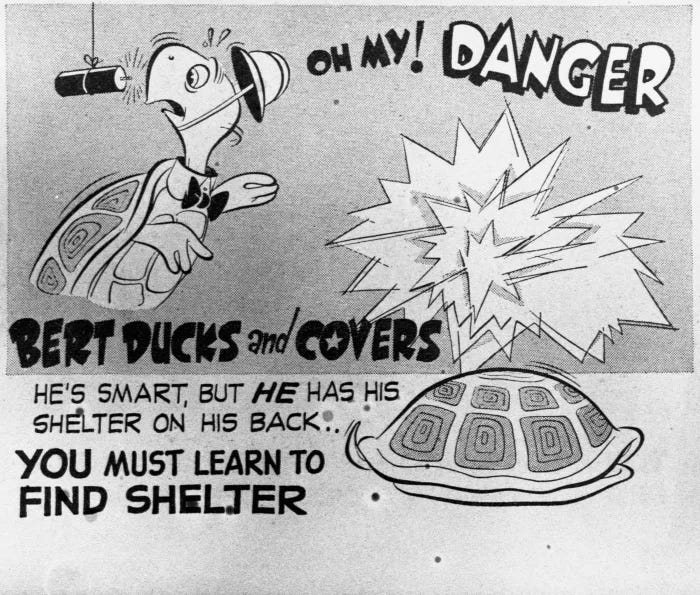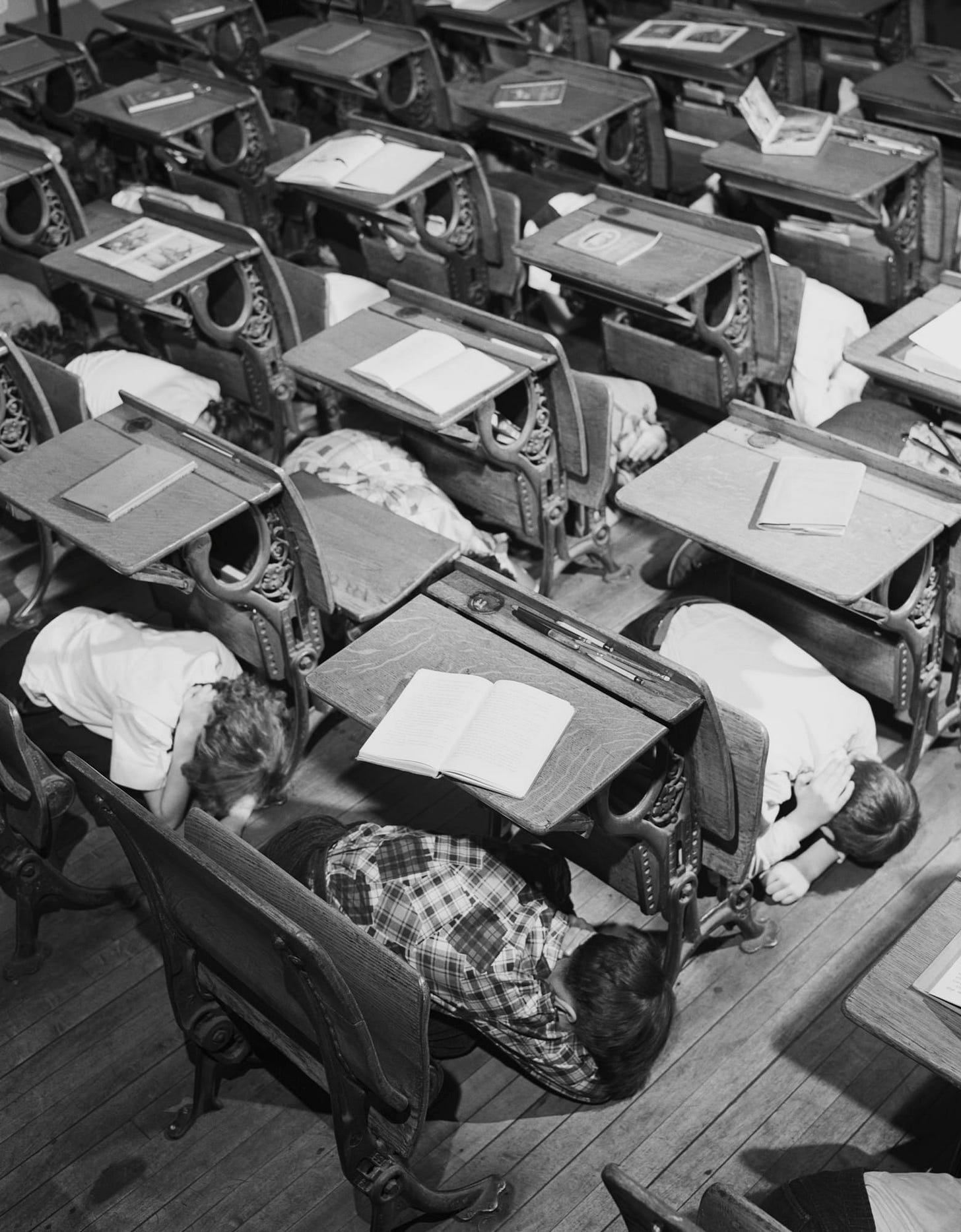The End of History (isn't here yet)
The balloon. The Cold War. The End of History that isn't the end of history in a life of faith.
Let’s start with the balloon.
I’m sure you have heard about the Chinese (“meteorological”) balloon that floated over the United States before being shot down once it floated over the Atlantic Ocean. Some have been surprised at the level of consternation the balloon generated. I am not. It gave me flashbacks from my childhood and into the late eighties of the Cold War. It is hard to describe to those young enough to not experience or remember it - just how different the feeling of the Cold War era was.
When I was a small child, the Vietnam war was still raging, the Korean war (which we were experiencing a version of through the iconic TV show M.A.S.H.) was only about 15 years past. This translates to 2008 to us now - think a few years after Friends ended and a few years into How I Met Your Mother. World War II was only about 25 years past. That translates to 1998 to us now - think seven years after Operation Desert Storm or the last season of Seinfeld. The Cold War was very much in full flower. In fact, duck and cover drills were just falling out of favor. I think I was born just a little to late to remember doing any of those. It makes me chuckle to think about school children crouching under their school desks as a drill in preparation for a nuclear attack, but that is what happened. People had bomb shelters - by the time I was very young, people weren’t installing them anymore really, but they were there. The Cuban Missile Crisis had come and gone by the time that I was born, but the entire Cold War was a series of crisis events that may have resulted in a cataclysm. Gary Powers was shot down over the Soviet Union flying a U2 spy plane (which was described by the US government as a meteorological mission, of course) - and the world was on edge - just one in a recurring series of possible flashpoints. As it wore on, the Cold War seemed less dangerous just with the passing of time - but the danger lasted into my days as an engineer in the defense industry in the late eighties. In those days, all the scenario planning concerned itself with a massive Soviet invasion into the Fulda Gap of central Europe. It seems hard to believe that the world was that different a few decades ago.
But then the Cold War ended (right?), and all of that was supposed to be over.
Francis Fukuyama in his influential book - The End of History and the Last Man - said the progression of history had come to the stage that liberal democracy was the final evolution, and the conflicts of history were, in some real sense, over. We were set - there would be bumps and crisis and problems to solve, but we had reached the end of history - all that worry of the end of the world began to fade. Liberal Democracy was going to be on the ascendant.
This optimism that came after the fall of the iron curtain in one sense didn’t last long - 9/11, the financial crash of 2008, a world-impacting pandemic, a nation in turmoil all testify to a reality that belies optimism. In another sense, the idea that we should be past all this and we should be moving onward and upward together dies hard. Collectively, we seem to be having trouble grappling with the notion that all this turmoil and danger is not over. The end of history is not here yet. That happy narrative has been smashed. The balloon - which the Chinese government continues to insist was simply for “meteorological research” - was an unpleasant reminder that the happy narrative was never really true. I believe this tension is part of what lies behind so much of our collective anxiety, outrage, and extremism.
I have mentioned the growth of post-apocalyptic cultural artifacts as an expression that something has gone wrong and reflects a collective belief that the story we are in is not ending well. The smashing of the supposed happy narrative is, I believe, part of what is behind this. Tom Perrota’s 2011 novel and the HBO series (2014-2017) The Leftovers is illustrative. As The Leftovers story arc begins, 2% of the population has simply disappeared. This rapture-like disappearance certainly wasn’t the rapture, it came from nowhere and completely smashed all narratives and all expectations of the future. The smashing of expected narratives that resulted from this disappearance led to the proliferation of all manner of strange and extreme cults and sects. All the old narratives didn’t work, some kept going on autopilot - but some reacted in anxiety, outrage, and extremism.
Like the inhabitants of the fictional Leftovers series, many people find their narratives upended with no obvious replacement. We thought we knew what was coming - or at least what wasn’t coming. But one of those things we thought wasn’t coming was a “meteorological” balloon from another world power floating over the continental United States. We are no longer herding school children under desks in a nuclear attack preparation drill, but we also don’t know where history is headed - not with any specificity.
Now faith is confidence in what we hope for and assurance about what we do not see. This is what the ancients were commended for.
(Hebrews 11:1-2)
Those in the community of the Christian faith have an advantage here - though we may not always live like we do. We know how, in the big picture, someday, the story ends. We are to find our story in this bigger story. It is to give us perspective on life and meaning and purpose and on death as well. We don’t always live like we have this perspective, falling into the societal angst over not knowing what will happen this year or next year. But we are to be a people of faith - faith being that response of confidence in what we hope for and conviction regarding what we do not see. We want to be people of such depth of predictive knowledge that we don’t need faith. We would rather pretend this is our situation.
Jesus’ followers asked him, after Jesus had talked about the end of all things, when and how all of this would happen. Sermons have been preached and books have been written, literally, on Jesus’ answers to these questions. But the thrust of Jesus’ answer speaks to our response - he said that we won’t know the day or the hour of the end, and we should “keep watch”, meaning to get busy fulfilling the mission of the church - community, care, love, truth, grace. We can leave the details of the end to Him. But we often don’t. We don’t even leave the details of next year to Him. Or next month. To do that, while still exercising our God-given agency, requires humility, dependence, and faith. We prefer to take the future in our own hands.
Now listen, you who say, “Today or tomorrow we will go to this or that city, spend a year there, carry on business and make money.” Why, you do not even know what will happen tomorrow. What is your life? You are a mist that appears for a little while and then vanishes. Instead, you ought to say, “If it is the Lord’s will, we will live and do this or that.”
(James 4:13-15)
We have our own happy narratives. Those of us in the community of faith can turn prudent and responsible planning for the future into a security blanket, when our security is meant to be found elsewhere. History isn’t over yet and we don’t know what will happen in a few months, not to mention a few years. But that is the human condition and it always has been. A balloon from another world power floating over our country is an opportunity - a reminder of the way things really are. We don’t control the future. The time of the end isn’t ours to know. But we know that we have an opportunity for faithfulness today. So let’s get busy, by God’ grace, with a transformative life of mission as a community of faith. That is enough … more than enough.
Links
China’s Balloon Recalls Cold War Crises - WSJ
The Chinese Balloon and the Disappointing Reality of UFOs - The Atlantic
Duck and Cover Drills in the Cold War Arms Race - History.com
It’s Still Not the End of History - The Atlantic
What is Fukuyama Saying? And To Whom is He Saying it? - NYT Magazine
The Leftovers - HBO






